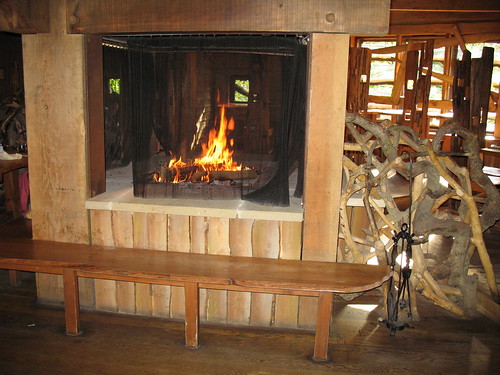The Daily Mail are carrying a very interesting article on an important archaeological discovery in Eastern Turkey. The discovery was made in 1994 by an old Kurdish shepherd, whilst tending his flock in the hillside:
The man looked left and right: there were similar stone rectangles, peeping from the sands. Calling his dog to heel, the shepherd resolved to inform someone of his finds when he got back to the village. Maybe the stones were important.
They certainly were important. The solitary Kurdish man, on that summer's day in 1994, had made the greatest archaeological discovery in 50 years. Others would say he'd made the greatest archaeological discovery ever: a site that has revolutionised the way we look at human history, the origin of religion - and perhaps even the truth behind the Garden of Eden.
 In late 1994 following the discovery, archaeologist Klaus Schmidt went to the site of Gobekli Tepe to begin excavations. The article goes on to explain what he found at the site:
In late 1994 following the discovery, archaeologist Klaus Schmidt went to the site of Gobekli Tepe to begin excavations. The article goes on to explain what he found at the site:The site of Gobekli Tepe is simple enough to describe. The oblong stones, unearthed by the shepherd, turned out to be the flat tops of awesome, T-shaped megaliths. Imagine carved and slender versions of the stones of Avebury or Stonehenge.Schmidt speculates that bands of hunters gathered at the site over the years of it's construction. The theory is supported by the flint arrowheads that have been found at the site.
Most of these standing stones are inscribed with bizarre and delicate images - mainly of boars and ducks, of hunting and game. Sinuous serpents are another common motif. Some of the megaliths show crayfish or lions.
The stones seem to represent human forms - some have stylised 'arms', which angle down the sides. Functionally, the site appears to be a temple, or ritual site, like the stone circles of Western Europe.
To date, 45 of these stones have been dug out - they are arranged in circles from five to ten yards across - but there are indications that much more is to come. Geomagnetic surveys imply that there are hundreds more standing stones, just waiting to be excavated.
So far, so remarkable. If Gobekli Tepe was simply this, it would already be a dazzling site - a Turkish Stonehenge. But several unique factors lift Gobekli Tepe into the archaeological stratosphere - and the realms of the fantastical.
The first is its staggering age. Carbon-dating shows that the complex is at least 12,000 years old, maybe even 13,000 years old.
That means it was built around 10,000BC. By comparison, Stonehenge was built in 3,000 BC and the pyramids of Giza in 2,500 BC.
Gobekli is thus the oldest such site in the world, by a mind-numbing margin. It is so old that it predates settled human life. It is pre-pottery, pre-writing, pre-everything. Gobekli hails from a part of human history that is unimaginably distant, right back in our hunter-gatherer past.
 It was when the author of the article first arrived at the site that the theory that it might be the biblical Garden of Eden was first mentioned:
It was when the author of the article first arrived at the site that the theory that it might be the biblical Garden of Eden was first mentioned:About three years ago, intrigued by the first scant details of the site, I flew out to Gobekli. It was a long, wearying journey, but more than worth it, not least as it would later provide the backdrop for a new novel I have written.The author goes on to describe humanity's leisurely hunter-gatherer past where we picked fruit from trees, scooped fish from rivers and the rest of the day was for leisure. Then he explains how this lifestyle turned into the harsher life of farming. The stones depict scenes from the lush landscape before the land was destroyed by man:
Back then, on the day I arrived at the dig, the archaeologists were unearthing mind-blowing artworks. As these sculptures were revealed, I realised that I was among the first people to see them since the end of the Ice Age.
And that's when a tantalising possibility arose. Over glasses of black tea, served in tents right next to the megaliths, Klaus Schmidt told me that, in his opinion, this very spot was once the site of the biblical Garden of Eden. More specifically, as he put it: 'Gobekli Tepe is a temple in Eden.'
There were herds of game, rivers of fish, and flocks of wildfowl; lush green meadows were ringed by woods and wild orchards. About 10,000 years ago, the Kurdish desert was a 'paradisiacal place', as Schmidt puts it. So what destroyed the environment? The answer is Man.The author then explains that a few years ago in the nearby Cayonu, archaeologists unearthed human skulls and an altar-like slab. This evidence of human sacrafice may hold the missing key as to why the stones were still in tact:
As we began farming, we changed the landscape and the climate. When the trees were chopped down, the soil leached away; all that ploughing and reaping left the land eroded and bare. What was once an agreeable oasis became a land of stress, toil and diminishing returns.
And so, paradise was lost. Adam the hunter was forced out of his glorious Eden, 'to till the earth from whence he was taken' - as the Bible puts it.
Of course, these theories might be dismissed as speculations. Yet there is plenty of historical evidence to show that the writers of the Bible, when talking of Eden, were, indeed, describing this corner of Kurdish Turkey.
Around 8,000 BC, the creators of Gobekli turned on their achievement and entombed their glorious temple under thousands of tons of earth, creating the artificial hills on which that Kurdish shepherd walked in 1994.Whether or not this is the site of the garden of Eden is a matter for debate, but either way it is a fascinating story and difficult to imagine anything quite so old.
No one knows why Gobekli was buried. Maybe it was interred as a kind of penance: a sacrifice to the angry gods, who had cast the hunters out of paradise. Perhaps it was for shame at the violence and bloodshed that the stone-worship had helped provoke.
Whatever the answer, the parallels with our own era are stark. As we contemplate a new age of ecological turbulence, maybe the silent, sombre, 12,000-year-old stones of Gobekli Tepe are trying to speak to us, to warn us, as they stare across the first Eden we destroyed.
H/T Pupazz
Who is unfortunately unable to blog about it himself due to technical difficulties...



































